Specifications
For the nit-pickers and nerdy ones here, I’m giving the specs and technical sheets. For all the others, you can just go to the next page to see how the DAP performs.
ROHM MUS-IC + FPGA
The iBasso DX320 uses two sets of BD34301EKV DAC provided by ROHM, a semiconductor company that I never heard about, prior to this review. And, while I expected them to be a newcomer in the market, it appears they’ve been in the market since… 1997!
Top of the line, the BD34301EKV seems to offer equal performances to chips from popular brands like Sabre ESS or AKM AK series. Even compared to the previous set of MasterHiFi chips embedded into the DX300, those Mus-IC DAC look pretty close to the original advertised performance.
iBasso presents this new DAC as “the pinnacle of audio ICs” able to emphasize “spatial reverberation”, “quietness” and “dynamic range”. On top of that, the brand was extra careful to pick only the best capacitors and resistors, to ensure that each chip gets the best electric signal possible.
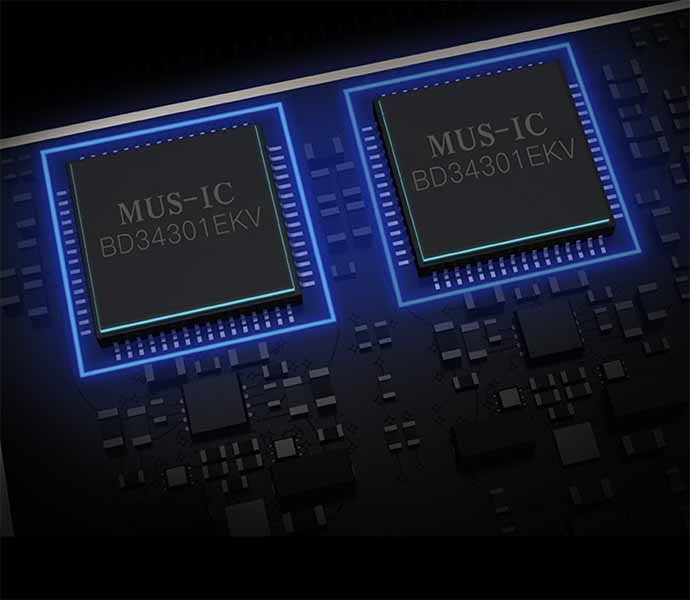
Numbers?
- 130dBA dynamic range,
- THD+N rating of -115dB
- crosstalk up to -120dB in balanced mode
- and a signal-to-noise ratio able to reach -130dB
In parallel, the iBasso DX320 still uses its own in-house FPGA-Master chip, working as the brain of the audio circuit. This audio system controller receives the data from the CPU, synchronizes and generates all audio clocks at the same time using two Accusilicon femtosecond oscillators, then sends it to the dual DAC in I²S, or DSD.
The DAC supports ultra-high-resolution files, up to 32bit-384kHz in PCM, DSD up to DSD512, and full MQA decoding with MQA 16x, instead of the usual MQA 8X. In the real world, this means that the player is able to offer bit-perfect playback, with any kind of file, in every situation.
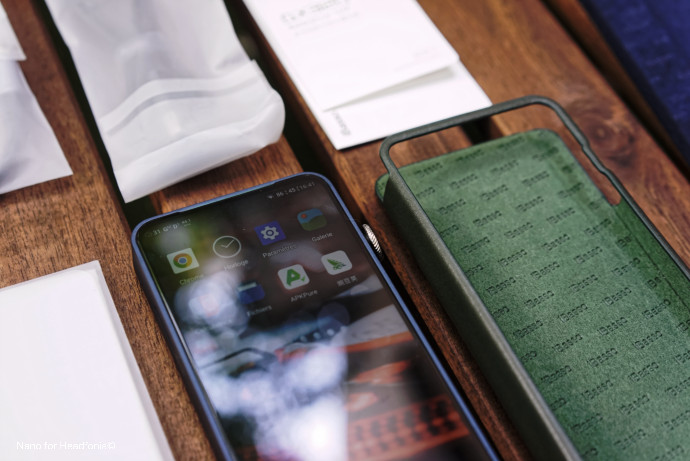
Dual Battery + Replaceable Amp
As I said before, the iBasso DX320 enjoys a dual Battery system. The idea behind this is to separate the AMP circuit and the Digital Circuit, to ensure minimal distortion and a consistent level of current, whenever it’s needed.
Each battery gets its own controller chip, and you can see on the upper right side of the player the remaining level of power left. The 2000mAh is dedicated to the amp section, while the 4000mAh goes for the digital one (DAC, CPU, FPGA, etc). It’s the same kind of setup, you see in ultra high-end setup, where the power source is completely separated from the drive, or the amp, but in a (relatively) small player.
And if that was not enough, the DX320 also supports replaceable AMP cards, like the previous generation. By default, the player comes with the AMP11 MK2s, which is based on the previous AMP11 MK2n with its discrete circuit. The output voltage is rated at 7.1Vrms with a maximum output power of 1200mW@32ohms / 168mW@300ohms, thanks to the +/-8V power supply.
Impressive numbers!
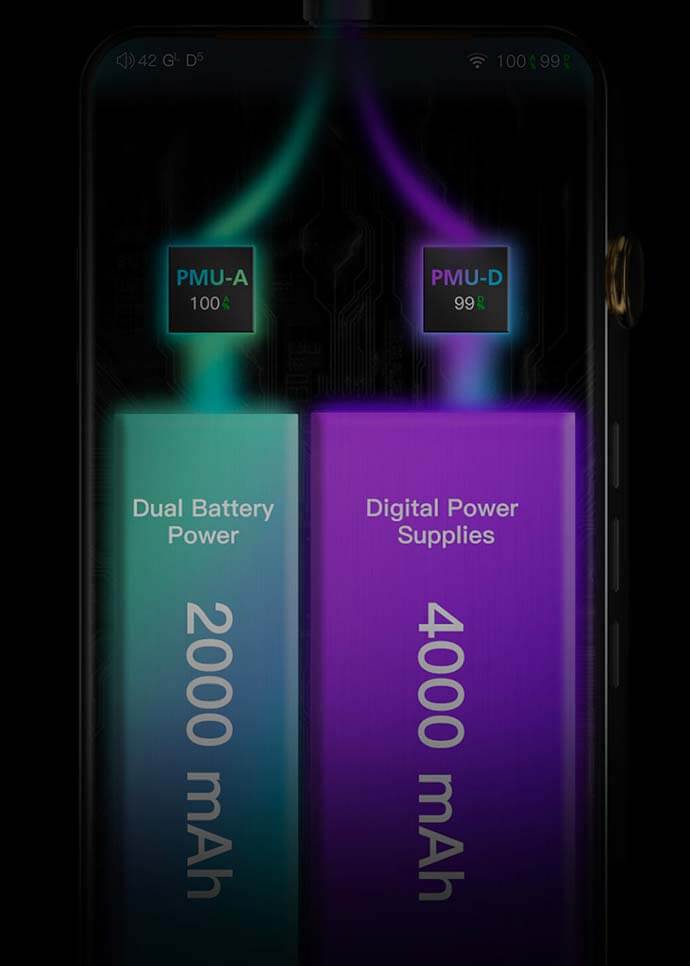
Full specs
- Type: Digital Audio Player
- OS: Android 11.0
- CPU: Qualcomm 660
- RAM: 6Gb
- Storage: 128Gb + micro-SD
- DAC: 2x ROHMM MUS-IC BD34301EKV
- Sample rate: PCM : 8Hz – 384kHz (8/16/24/32bits) native – DSD64/128/256
- System clock: Full synchronization technology with TXCO PPL + FPGA Master
- Outputs: 3.5mm headphone out/line-out / 4.4mm Pentaconn balanced headphone output / 2.5mm TRRS balanced headphone output
- Input: USB Type-C
- Screen: 6.5″ 2340×1080 LTPS IPS Screen
- Micro SD: SDHC / SDXC (single slot)
- USB DAC: yes
- WiFi: 2.4 GHz / 5 GHz support (2X2 MIMO)
- DNLA + APK support
- Bluetooth support: SBC, aptX, LDAC, AAC – BT5.0
- Duplex Bluetooth: the player can emit and receive music
- Battery: 2000mAh Li-Polymer (amp) + 4000mAh (Li-Polymer (DAC)
- Quick Charge: yes (QC 3.0 / PD2.0 / MTK)
- Battery life: 15h in single-ended, 12h in balanced
- Charging time: around 1h30
- Size: 162mm x 77mm x 17mm
- Weight: 310g (335g with the leather case)
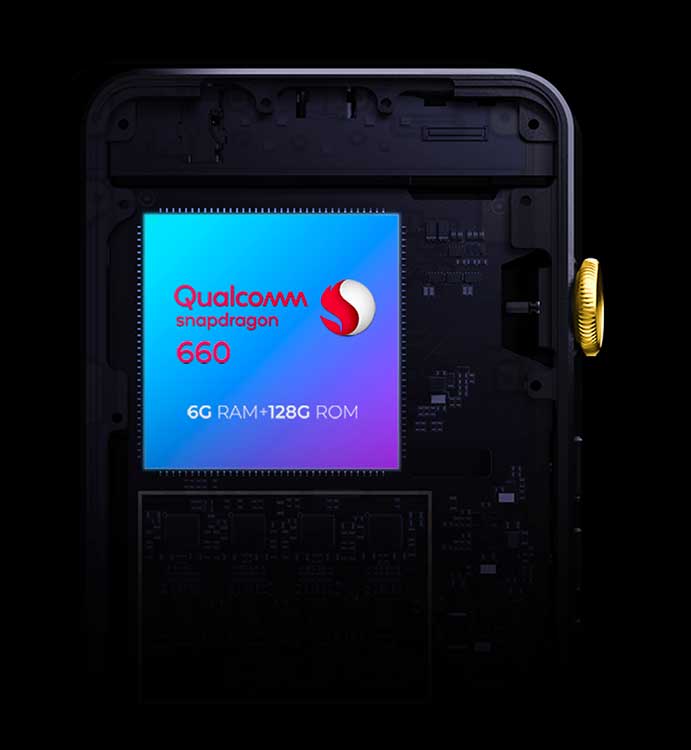
4.4mm/2.5mm Headphone out
- Output level: 7.1Vrms (max)
- Output Power: 1200mW@32ohms, 168mW@300ohm
- SNR/Dynamic Range: 125 dB / 125dB
- Crosstalk : – 120dB
- Output impedance: 0.39 ohms
- THD+N: -109dB (300ohms) / -101dB (32ohms)
- Frequency Response: 10Hz – 40kHz
3.5mm Headphone out
- Output level: 3.5Vrms (max)
- Output Power: 350mW@32ohms, 34mW@300ohm
- SNR/Dynamic Range: 122 dB / 122dB
- Crosstalk : – 114dB
- Output impedance: 0.34 ohms
- THD+N: -110dB (300ohms) / -99dB (32ohms)
- Frequency Response: 10Hz – 40kHz
The review continues on Page Five, after the click HERE or by using the jump below.
Page 1: about the brand
Page 2: Design, bundle
Page 3: UI, Usage
Page 5: Sound performances





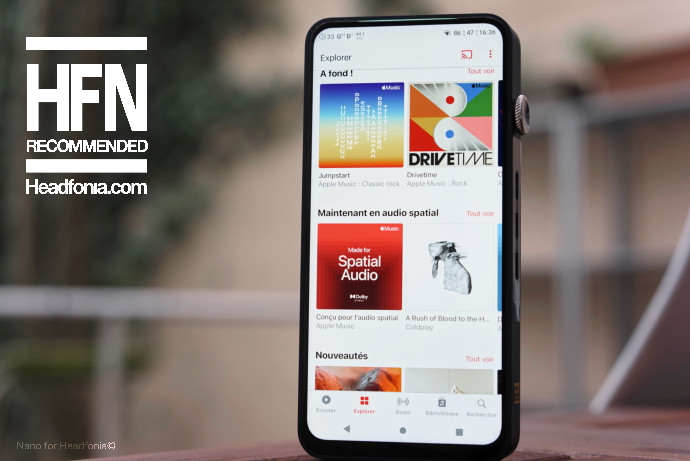

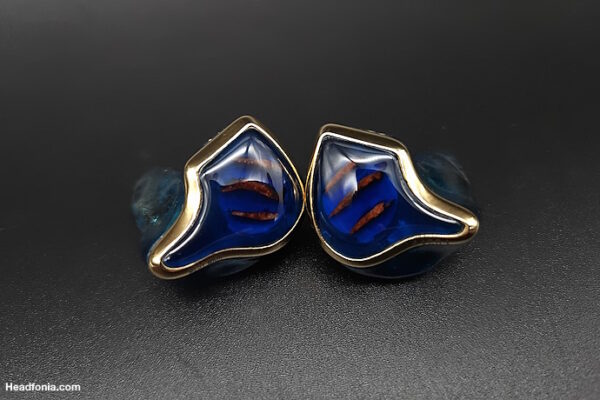
ginandbacon
I couldn’t agree more with your review. The DX320 is only my second DAP (I returned my first) but there is some magic to the stock 11.2(?) amp and ROHM DAC’s that is very neutral yet fun and sometimes surprising at how good it can make low bitrate Spotify songs sound. My previous DAP was returned due to it not being a huge upgrade over a dongle IMO. I won’t name the brand but it was half the price as the DX320. I see you mentioned receiving the AMP13 card in the review but no mention of it outside it being in the bundle. Or it may be a separate review for later. Personally I prefer the stock card that comes with the DX320 but different ears have different opinions and options are never a bad thing.
Alessandro Sabatino
Io posseggo un Ibasso DX220 amp8 e mi trovo molto bene, a parte che si surriscalda troppo, un po’ lento come sistema operativo e la batteria dura poco, per il resto come qualità sonora, in bilanciato, con powerAmp, suona che é una meraviglia. La domanda é questa, la mia mente da appassionato di audio di qualità mi sta portando o spingendo nellacquistare l’Ibasso DX320. Secondo qualcuno che li ha provato entrambi, ne vale veramente la pena spendere 1450€ per fare questo salto? Parlo solo di qualità audio, che é la cosa che m’interessa maggiormente. Potete rispondermi il più presto possibile, perché le mie mani mi prudono a tal punto che devo prendere gli antistaminici… 🤣
Alessandro Sabatino
I own an Ibasso DX220 amp8 and I feel very good, apart from that it overheats too much, a bit slow as an operating system and the battery lasts little, for the rest as sound quality, in balanced, with powerAmp, it sounds that is a wonder. The question is this, my mind as a quality audio enthusiast is leading me or pushing me to buy the Ibasso DX320. According to someone who has tried both, is it really worth spending € 1450 to make this jump? I’m only talking about audio quality, which is the thing that interests me the most. You can answer me as soon as possible, because my hands itch so much that I have to take antihistamines…